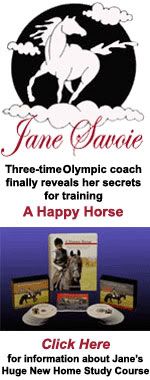
Wildside
Endangered Species & Wild Animals
All content © by Diana L. Guerrero unless otherwise noted and may not be reprinted without prior written permission. All rights reserved. Click here for reprint permissions and fees.
Wildside Explores Elephant Training & Management
Learn the truth about elephant training and management in the United States. This article is a 1995 update of similar articles published in: International Zoo News & The Journal of the Elephant Manager's Association Volume VI Number 2. Read this elephant training & elephant management article series from the beginning.
Elephant Management in the United States:
The Evolution of Change (Part 7
of 7)
+Chain Behaviors/Chaining Behaviors: This is when behaviors are linked together in a sequence. In training, animals should not do this on their own unless trained to respond in that manner. Back to article.
*Unfavorable
Media Summary: In the United States there
have been numerous media accounts of the elephant incidents including
attacks on the trainers handling elephants and issues surrounding
elephant care and management. In 1988, a large campaign was held
by animal advocates in response to the alleged beating of an African
Elephant at one of the more prominant US Zoos. Since that time other
incidents have occurred which continue to stir up public interest
and concern over the issue of elephant management. 1988 through
1996: Multiple elephant abuse and elephant death articles.1990-1996:
22 human deaths due to elephants. Extensive listings can be obtained
through the Elephant Manager's Association Bibliography of the News,
c/o Barb Milankow, Indianapolis Zoo, Plains Biome, 1200 West Washington
Street, Indianapolis, Indiana 46222 USA or the Elephant Alliance,
6265 Cardeno Drive, La Jolla, CA 92037 USA. Back
to article.
** There are four systems of elephant managementdefined
by the American Zoo & Aquarium Association (AZA) These are defined
as: Back to article.
1. Free Contact: Direct handling
of an elephant when the keeper and the elephant share the same unrestricted
space. Neither the use of chains nor the posture or position of
the elephant alters this definition. Back
to article.
2. Protected Contact: Handling
of an elephant when the keeper and the elephant do not share the
same unrestricted space. Typically in this system, the keeper has
contact with the elephant through a protective barrier of some type,
while the elephant is not spatially confined and may leave the work
area at will. Back to
article.
3. Confined Contact: Handling
of an elephant through a protective barrier where the elephant is
spatially confined as in an Elephant Restraint Chute (ERC).
4. No Contact: Handling of an elephant
with no contact made unless the elephant is chemically sedated.
***Reinforcers are items used to
reinforce or reward behavior and can also be signals announcing
their delivery to the animal. A "Conditioner Reinforcer"
is something that is trained to replace a "Primary Reinforcer" by
association. Food is a "Primary Reinforcer" and whistle, word, or
tone given with the food becomes a "Conditioned Reinforcer" aka
"Secondary Reinforcer" and can be used instead of always
giving food.Back to article.
****Bridging Criteria: A "bridge" is
also known as a "Conditioned Reinforcer." In training a bridge is
used to let the animal know that the reponse is correct. It usually
signals this to the animal at the highest degree of the behavior.
Usually the criteria for a specific behavior is always the same
for consistency. For example, a foot presentation should always
be given at the same height. A bridge would be used to signal that
the correct height is obtained while a release would signal the
behavior is completed and the animal can cease performing that behavior. Back to article.
Diana L. Guerrero, author of this series, is an animal behavior consultant and animal training coach with extensive experience in many areas of the animal world. Guerrero has worked with elephants in both protected and free contact.




